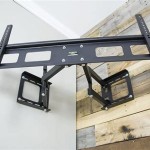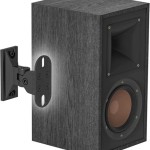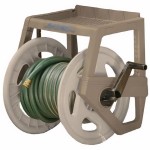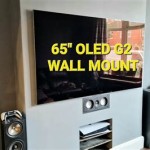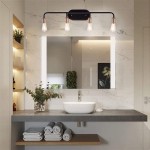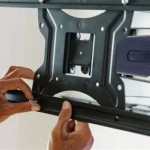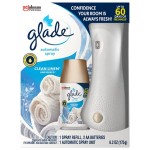Pull Down TV Wall Mounts: Optimizing Viewing Angles and Space
Pull-down TV wall mounts represent a specific category of television mounting hardware designed to offer enhanced flexibility in viewing angles, particularly in situations where optimal viewing requires the television to be positioned lower than its mounted height. This type of mount facilitates the lowering of the television screen from its resting, typically higher, position to a more ergonomic viewing level. This article delves into the functionality, applications, advantages, and considerations associated with pull-down TV wall mounts.
The fundamental purpose of a pull-down TV wall mount is to combine the space-saving benefits of a wall-mounted television with the adjustable viewing height typically associated with a television stand. These mounts are engineered to allow the user to manually pull the television downwards, typically with a spring-assisted or gas-strut mechanism, to a desired viewing angle. When not in use, the television can be pushed back up and locked into its original, elevated position. This feature is particularly useful in bedrooms, above fireplaces, or in any location where a high mounting position is necessary due to space constraints or aesthetic considerations.
The mechanics of a pull-down TV mount typically involve a combination of pivoting arms, locking mechanisms, and counterbalance systems. The pivoting arms allow the television to be lowered and often tilted, providing a range of viewing angles. The locking mechanism secures the television in both the raised and lowered positions, preventing inadvertent movement. The counterbalance system, often implemented using springs or gas struts, assists in the smooth and controlled movement of the television, reducing the effort required to raise and lower it.
Key Features and Functionality of Pull-Down TV Mounts
The functionality of a pull-down TV mount hinges on several critical design features. These features contribute to the overall user experience and ensure both safety and ease of operation. Understanding these features is crucial for selecting the appropriate mount for a given television and viewing environment.
Range of Motion: A key specification of any pull-down TV mount is its range of motion. This refers to how far the television can be lowered from its resting position. The ideal range of motion depends on the intended viewing distance and the desired eye level of the viewer. Mounts with a greater range of motion offer more flexibility in adjusting the viewing angle.
Tilt Angle: In addition to vertical movement, many pull-down TV mounts also offer tilt functionality. The ability to tilt the television screen can further improve viewing angles, particularly in situations where there is ambient light reflection or where the viewer is positioned at an angle to the screen. The tilting capability helps to minimize glare and distortion.
Swivel Capability: Some advanced pull-down TV mounts incorporate a swivel function, allowing the television to be rotated horizontally. This feature is particularly useful in open-plan living spaces where the television may need to be viewed from multiple locations. Swivel functionality expands the viewing area and improves the overall versatility of the mount.
Weight Capacity: The weight capacity of a pull-down TV mount is a critical factor to consider. The mount must be capable of safely supporting the weight of the television. Exceeding the weight capacity can lead to structural failure, potentially damaging the television and posing a safety hazard. It is essential to consult the television's specifications and select a mount with an adequate weight capacity.
VESA Compatibility: VESA (Video Electronics Standards Association) compatibility refers to the standardized screw hole pattern on the back of televisions, which are used to attach the mount. Ensuring that the mount is VESA compatible with the television is crucial for a secure and proper installation. VESA patterns are typically expressed in millimeters (e.g., 200x200 mm, 400x400 mm) and must match the corresponding measurements on the mount.
Cable Management: Effective cable management is an important consideration for maintaining a tidy and organized appearance. Pull-down TV mounts often incorporate cable management features, such as channels or clips, to route cables along the arms of the mount and conceal them from view. Proper cable management not only improves aesthetics but also prevents cables from becoming tangled or damaged.
Locking Mechanisms: Reliable locking mechanisms are essential for securing the television in both the raised and lowered positions. These mechanisms prevent accidental movement and ensure that the television remains stable and secure. The locking mechanisms should be easy to operate and provide a positive indication of engagement.
Advantages of Using Pull-Down TV Wall Mounts
The use of pull-down TV wall mounts provides several distinct advantages over traditional television stands or fixed wall mounts. These advantages stem from the enhanced flexibility in viewing angles and the space-saving benefits of wall mounting.
Optimized Viewing Angles: The primary advantage of a pull-down TV mount is its ability to optimize viewing angles. By allowing the user to lower the television screen to a more comfortable viewing height, these mounts reduce strain on the neck and eyes. This is particularly beneficial for viewers who are sitting on a couch or bed that is positioned lower than the mounted television. The flexibility to adjust the viewing angle ensures a more immersive and enjoyable viewing experience.
Space Saving: Wall-mounting a television inherently saves floor space compared to using a traditional television stand. Pull-down TV mounts further enhance this benefit by allowing the television to be mounted higher on the wall, freeing up even more space below. This is particularly advantageous in smaller rooms or apartments where maximizing space is a priority.
Aesthetic Appeal: A wall-mounted television with a pull-down mount can create a clean and modern aesthetic. By concealing the television cables and eliminating the need for a bulky television stand, these mounts contribute to a more streamlined and uncluttered appearance. The ability to hide the television when not in use further enhances the aesthetic appeal of the space.
Versatility: Pull-down TV mounts are versatile and can be used in a variety of settings, including living rooms, bedrooms, kitchens, and home theaters. They are particularly well-suited for situations where the television needs to be viewed from multiple locations or where optimal viewing angles are difficult to achieve with a fixed mount. The adaptability of these mounts makes them a popular choice for a wide range of applications.
Ergonomic Benefits: By allowing the user to adjust the television to a comfortable viewing height, pull-down TV mounts offer significant ergonomic benefits. Reducing neck strain and eye fatigue can improve the overall viewing experience and prevent long-term discomfort. This is particularly important for individuals who spend extended periods watching television.
Enhanced Safety: Wall-mounting a television with a pull-down mount can improve safety by reducing the risk of the television being accidentally knocked over. This is especially important in households with children or pets. The secure mounting of the television prevents it from becoming a potential hazard.
Factors to Consider When Choosing a Pull-Down TV Mount
Selecting the appropriate pull-down TV mount requires careful consideration of several factors. These factors include the size and weight of the television, the VESA compatibility, the desired range of motion, and the specific mounting location. A thorough assessment of these factors will ensure that the chosen mount meets the needs of the user and provides a safe and enjoyable viewing experience.
Television Size and Weight: The size and weight of the television are the most critical factors to consider when choosing a pull-down TV mount. The mount must be capable of safely supporting the weight of the television. Exceeding the weight capacity can lead to structural failure and potential damage to the television. It is essential to consult the television's specifications and select a mount with an adequate weight capacity and size suitability.
VESA Compatibility: Ensuring VESA compatibility is crucial for a secure and proper installation. The VESA pattern refers to the standardized screw hole pattern on the back of the television. The mount must be compatible with the television's VESA pattern. Mismatched VESA patterns can prevent the mount from being securely attached to the television.
Range of Motion: The desired range of motion depends on the intended viewing distance and the desired eye level of the viewer. Consider how far the television needs to be lowered to achieve optimal viewing angles. Mounts with a greater range of motion offer more flexibility in adjusting the viewing angle.
Tilt and Swivel Capabilities: Evaluate whether tilt and swivel capabilities are necessary for the intended viewing environment. The ability to tilt the television screen can improve viewing angles in situations where there is ambient light reflection. Swivel functionality is useful in open-plan living spaces where the television may need to be viewed from multiple locations.
Mounting Location: The specific mounting location will influence the choice of pull-down TV mount. Consider the wall's construction and the availability of studs or other structural supports. If mounting to drywall, ensure that appropriate anchors are used to provide a secure attachment. Also, consider the presence of any obstructions, such as electrical outlets or pipes, that may interfere with the mounting process.
Ease of Installation: Evaluate the ease of installation of the pull-down TV mount. Some mounts are easier to install than others. Consider the availability of installation instructions and the complexity of the mounting process. If unsure, it may be advisable to hire a professional installer to ensure a safe and proper installation.
Budget: Pull-down TV mounts vary in price depending on their features and quality. Determine a budget and select a mount that meets the needs without exceeding the budget. While it is important to consider cost, it is equally important to prioritize safety and functionality.
Warranty and Customer Support: Check the warranty offered by the manufacturer and the availability of customer support. A good warranty provides peace of mind and protects against defects in materials or workmanship. Reliable customer support can be helpful in resolving any issues that may arise during installation or use.
Pull-down TV wall mounts provide a versatile solution for optimizing viewing angles and saving space. Careful consideration of these factors will help ensure the selection of a pull-down tv mount that will offer a safe and flexible tv viewing experience.

Mantelmount Pull Down Tv Wall Mount For Most 55 100 Tvs Black

Mount It Fireplace Mantel Full Motion Bracket Pull Down Tv Wall Fits 42 To 55 S Lbs Capacity

Full Motion Fireplace Drop Down Wall Mount Bracket 43 70 Tvs To 72 Lbs

Mantelmount Mm700 Pro Pull Down Tv Mount

Mantelmount Mm860 Pro Series Pull Down Tv Mount

Mount It Mi 386 Motorized Above Fireplace Wall For 40 To 70 Displays Black

Mount It Pull Down Tv Mantel Fireplace Fits 40 To 80 S Capacity 62 Lbs Wal Com

650326 43 70 Pull Down Tv Wall Mount Bracket Levelone

Mantelmount Mm750 Pro Pull Down Tilt And Swivel Wall Mount For Tvs 55 100 At Crutchfield

Mount It Mi 395 Pull Down Fireplace Tv With Spring Arm For 43 To 70 Displays Black

